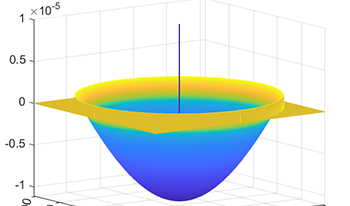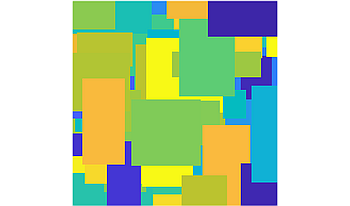
There are a variety of computational formulations of retinex but it is the center/surround convolutional variant that is of interest to us here. In convolutional retinex, an image is filtered by a center/surround operator that is to designed to mitigate the effects of shading, which in turn compresses the dynamic range. The parameters that define the shape and extent of these filters are tuned to give the “best” results. In their 1988 paper, Hurlbert & Poggio showed that the problem can be formulated as a regression, where corresponding pairs of images with and without the effects of shading are related by a center/surround convolution filter that is found by solving an optimization. This paper starts with the observation that finding sufficiently large representative pairs of images with and without shading is difficult. This leads us to reformulate the Hurlbert & Poggio approach so that we analytically integrate over the whole sets of shadings and albedos, which means that no sampling is required. Rather nicely, the derived filters are found in closed form and have a smooth shape, unlike the filters derived by the prior art. Experiments validate our method.

In material appearance we are interested in objectively measuring a physical aspect of a material, such as reflectance, and also in understanding how we see that material. In perceptual experiments we typically display simple stimuli to an observer, record their response, and then try to build a theory of why the observer responded in a given way. Often the latter model is implemented as a computer algorithm, and many of these are, for example, now implemented in camera pipelines for smartphones. However, the stimuli that are shown to observers are necessarily either very simple, such as rectangular patches of colour, or small in number. This raises the question as to whether the recorded responses to simple stimuli actually shed light on how we perceive scenes in the real world. In this paper, we look at a specific example of perceptual stimuli: Mondrian images, and investigate the extent to which, in the sense of their autocorrelation matrix, they represent the real world. We show that by modelling paths of pixels through an image using a statistical model that captures the statistics of real Mondrians, the autocorrelation matrix of Mondrians is Toeplitz, and moreover this Toeplitz structure is also found in real images. Although Mondrian images do not contain typical visual cues, our path model can be tuned to replicate the statistics of real images in the autocorrelation sense. The practical utility of this method is that paths through images and their autocorrelation statistics are a key tool for developing algorithms to predict the perceptual response to complex scenes. For example, this approach is at the foundation of retinex image processing. Experiments validate our method.